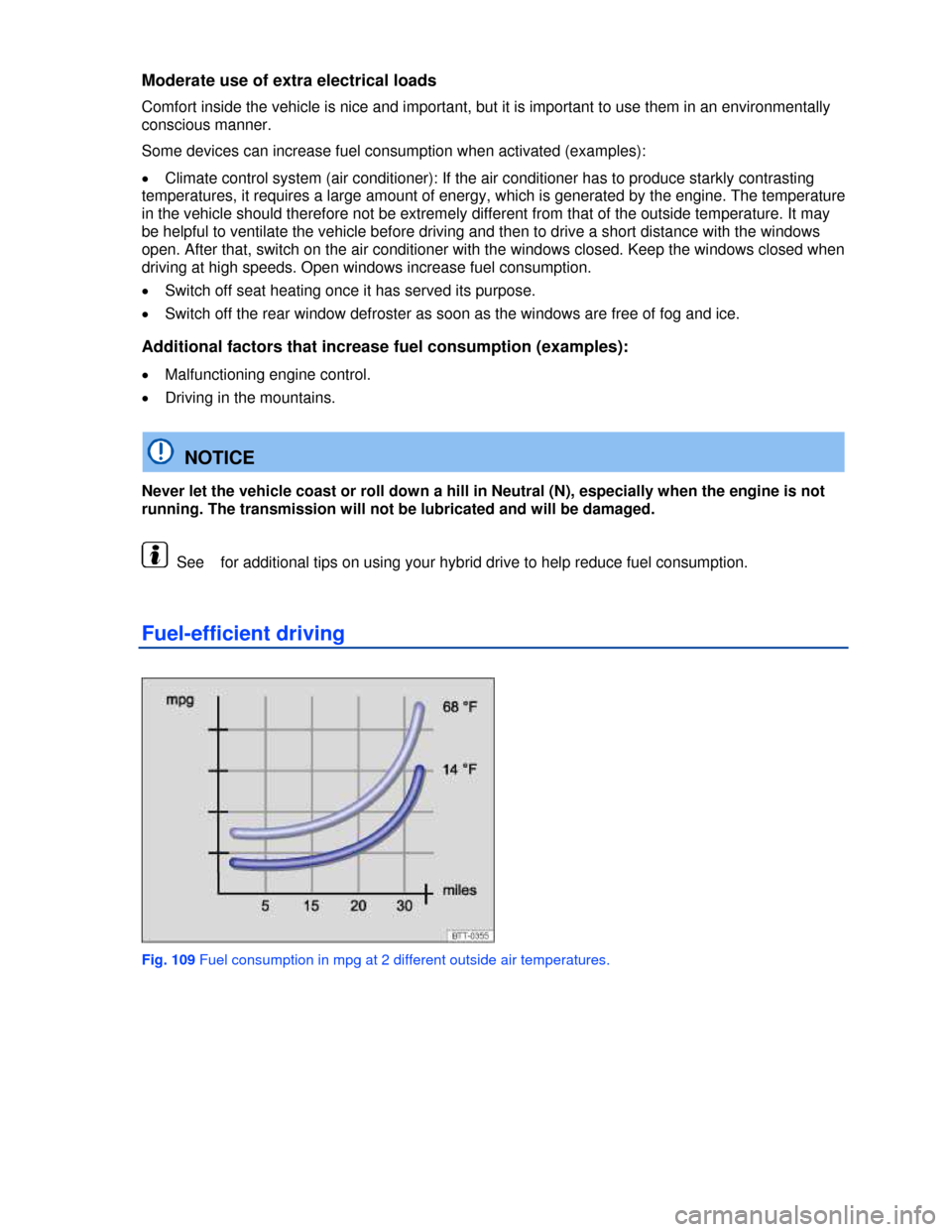Page 17 of 310

▪ Travel time
▪ Consumption --.- mpg (l/100 km) (current fuel consumption)
▪ Av. consumption --.- mpg (l/100 km) (average fuel consumption)
▪ Range
▪ Route
▪ Average speed --- mph (km/h)
▪ xx mph (km/h) (digital speed display)
▪ Oil temperature
▪ Speed warning --- mph (km/h)
Hybrid
Audio ⇒ Booklet Radio or ⇒ Booklet Navigation system
Navigation ⇒ Booklet Navigation system
Phone ⇒ Booklet Mobile Phone Package
Assistants (if equipped)
▪ AFS
Vehicle status Settings
▪ Language
▪ MFI data
– Travel time
– Curr. consum. (current fuel consumption)
– Av. consum. (average fuel consumption)
– Route
– Av. speed
– Digit. speed (digital speed display)
– Oil temp.
– Speed warn. (speed warning)
– Back
▪ Compass (vehicles without navigation system)
▪ Convenience
– ATA confirm
– Central locking
Auto unlock
Unlock doors
Back
– Window op. (window operation)
Off
All
Driver
Back
– Mirror adjust
Individually
Both mirrors
– Factory setting
– Back
▪ Lights & Vision
– Conv. turn sig. (convenience turn signal)
Page 23 of 310

2 Total trip memory
The memory displays and stores the accumulated driving and fuel con-
sumption data of any number of single trips up to a total driving time of
99 hours and 59 minutes, and up to a total distance of 9,999 miles
(9,999 km). If one of the maximum values is exceeded, then the memory
is automatically cleared and starts again from 0.
Possible MFI menu displays
The following displays can be accessed in the MFI menu if enabled under Settings > MFI data.
Displays that are not enabled will not appear.
Display Function
Travel time Driving time in hours (h) and minutes (min) corresponding to trip memo-
ries 1 and 2 (toggle).
Consumption
--.- mpg
Current fuel consumption in miles per gallon (l/100 km) while driving.
When units are set to miles, dashes appear instead of a number when
the engine is running and the vehicle is standing still.
When units are set to kilometers, the display shows liters consumed per
hour when the engine is running and the vehicle is standing still.
Consumption
--.- l/100 km
Av. consumption
--.- mpg Average fuel consumption in miles per gallon (l/100 km) on trips per trip
memories 1 and 2 (toggle) is displayed once the vehicle has been driven
about 330 feet (100 m). Until then, dashes appear instead of a number.
The value displayed is updated every 5 seconds. Av. consumption
--.- l/100 km
Range �� -- mi Estimated distance in miles (km) that the vehicle can go with the fuel left
in the tank the way you are currently driving. Takes account of the cur-
rent fuel consumption, among other things. Range��-- km
Route -- mi Distance driven in miles (km) per trip memories 1 and 2 (toggle). Route -- km
Average speed
-- mph Average speed on trips per trip memories 1 and 2 (toggle). Displayed
once the vehicle has been driven about 300 feet (100 m). Until then,
dashes may appear instead of a number. The value displayed is updated
every 5 seconds. Average speed
-- km/h
-- mph Digital display of current vehicle speed. -- km/h
Oil temperature --
°F Current oil temperature Oil temperature --
°C
Speed warning
--- mph When the set speed (from 20–155 mph or 30–250 km/h) is exceeded, an
acoustic warning sounds and a visual message may also appear in the
instrument cluster display. Speed warning
--- km/h
Switching between the displays
�x Use the arrow up and down buttons �*and �+ on the multi-function steering wheel.
Page 165 of 310

Moderate use of extra electrical loads
Comfort inside the vehicle is nice and important, but it is important to use them in an environmentally
conscious manner.
Some devices can increase fuel consumption when activated (examples):
�x Climate control system (air conditioner): If the air conditioner has to produce starkly contrasting
temperatures, it requires a large amount of energy, which is generated by the engine. The temperature
in the vehicle should therefore not be extremely different from that of the outside temperature. It may
be helpful to ventilate the vehicle before driving and then to drive a short distance with the windows
open. After that, switch on the air conditioner with the windows closed. Keep the windows closed when
driving at high speeds. Open windows increase fuel consumption.
�x Switch off seat heating once it has served its purpose.
�x Switch off the rear window defroster as soon as the windows are free of fog and ice.
Additional factors that increase fuel consumption (examples):
�x Malfunctioning engine control.
�x Driving in the mountains.
NOTICE
Never let the vehicle coast or roll down a hill in Neutral (N), especially when the engine is not
running. The transmission will not be lubricated and will be damaged.
See for additional tips on using your hybrid drive to help reduce fuel consumption.
Fuel-efficient driving
Fig. 109 Fuel consumption in mpg at 2 different outside air temperatures.